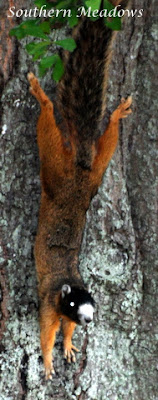Portrait of a Buckeye
Hands down one of the most captivating shrubs to watch unfurl in spring is the buckeye. From the big fat terminal bud to complete leaf out followed by bloom time, it is fascinating to watch.
In early spring the bud breaks open and slowly the contents begins to emerge.
The leaves gently cradle the bloom as a mother would her newborn.
Then ever so gracefully the leaves release the blossom and stretch themselves out.
As they gradually pull away, they spread far and wide.
The new leaves take in the sun and bring a new energy to the plant.
The blooms of the Red Buckeye stand upright waiting for the arrival of the ruby-throated hummingbirds while the Painted Buckeye calls out to the early bees and butterflies.
We have two varieties of buckeye growing in our garden, Painted Buckeye (Aesculus sylvatica) which is native to our area in the Georgia Piedmont and Red Buckeye (Aesculus pavia) which is native to the upper and lower coastal plain. Both varieties feel most at home at the edge of our beech/oak woods and in a clearing where they receive dappled sunlight. Here they grow alongside devil's walking stick, sumac, and elderberry shrubs.
In early spring the bud breaks open and slowly the contents begins to emerge.
The leaves gently cradle the bloom as a mother would her newborn.
Then ever so gracefully the leaves release the blossom and stretch themselves out.
As they gradually pull away, they spread far and wide.
The new leaves take in the sun and bring a new energy to the plant.
The blooms of the Red Buckeye stand upright waiting for the arrival of the ruby-throated hummingbirds while the Painted Buckeye calls out to the early bees and butterflies.
We have two varieties of buckeye growing in our garden, Painted Buckeye (Aesculus sylvatica) which is native to our area in the Georgia Piedmont and Red Buckeye (Aesculus pavia) which is native to the upper and lower coastal plain. Both varieties feel most at home at the edge of our beech/oak woods and in a clearing where they receive dappled sunlight. Here they grow alongside devil's walking stick, sumac, and elderberry shrubs.






.png)
